
Ju 287 V1

Early in 1943 a Junkers design team was assigned the task of designing a heavy bomber capable of higher speeds than any contemporary Allied fighter. Such a possibility was feasible by the German development of the turbojet engine. It was believed that with this power plant, swept back wings and thinner thickness-chord ratios would endow a bomber with a speed that would prevent it from being intercepted. The advantages and disadvantages of swept back wings were already known and at an early stage of the design it was proposed to to give the wings a forward sweep which was hoped would transfer stability problems to the opposite end of the speed range where they could be more easily dealt with. Wind tunnel tests confirmed this theory and also the disadvantages of this arrangement, that being its aeroelastic behavior. but it was believed that this could be corrected during the design stage.
The RLM approved the detail design and allocated it the designation Ju 287. It was deemed advisable to evaluate the low speed characteristics of the wing on a full scale test bed while the design of the definitive bomber was being finalized. In order to accomplish this a He 177A fuselage was adapted for the task, its conversion being completed in April of 1944 when the mating of the new wings began. The tail assembly was made up of standard Ju 388 parts and since under carriage stowage was not practical due to the need for absolute structural integrity of the forward swept wing, a massive fixed under carriage was adopted. The main wheels were braced to the main spar and consisted of Ju 352 main wheels enclosed in large fairings. The twin nose wheels were salvaged from a B-24 bomber. Power was provided by four Jumo 004B turbojets, two attached to the sides of the forward fuselage and two slung under the wings and attached to the rear spar.
Although only the wing bore any relation ship to the proposed bomber it was still designated the Ju 287 V1 and it was flown for the first time on August 14, 1944. To provide addition thrust for takeoff rocket packs were attached beneath each engine nacelle and these were jettisoned after takeoff. A large braking parachute could be deployed from the rear fuselage to reduce the landing run. In all 17 flights were made without incident other than the occasional failure of the temperamental turbojets or a rocket pack exploding. The aircraft proved to have pleasant flying characteristics in spite of its unorthodox appearance. It proved that the forward swept theory had been correct. Although intended for low speed flight only it was dived one time at full power reaching a speed of 404 m.p.h. which confirmed the issue of aeroelasticity of the forward swept wings. The V1 was eventually transferred to Rechlin where it was heavily damaged during an Allied bombing attack.
The Kit
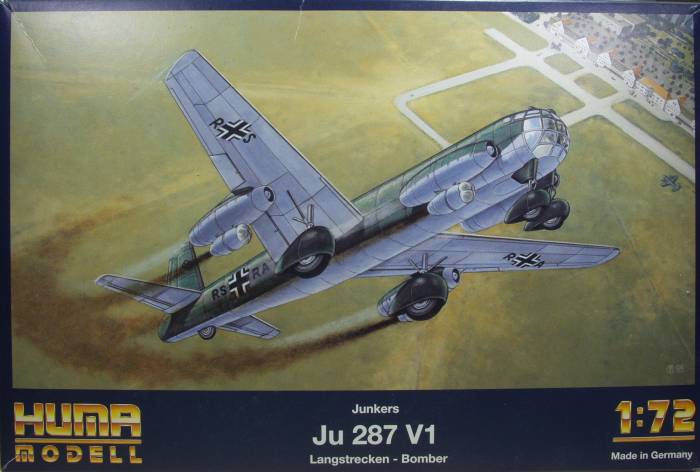
The Huma kit comes in a two part top open box with some what cartoonish artwork on the front. Inside all of the parts are contained in a single large bag. The kit is molded in a greenish gray color similar to RLM 02 gray and features recessed panel lines. The parts are cleanly molded with very little flash. The panel lines are a little large for the scale and it's difficult to tell them from the outlines for the control surfaces which could be a bit deeper. The surfaces are smooth and I did not find any sink marks other surface blemishes. The only ejector pin marks that will show are in the cockpit area. The cockpit has a reasonable level of detail for the scale with side consoles and instruments are represented with decals. Two seats are supplied but only one shown in the instructions. It is lacking belts and harness. The crew hatch is separate and includes a ladder if you pose it open. The engines are represented by intake and exhaust turbine blades and exhaust cones. The kit even supplies the movie camera that was attached to the rear fuselage to study the airflow over the wings. The kit will require weight in the nose to prevent tail sitting and this may cause an issue with the rather anemic front landing gear. The struts here might be worth replacing with some metal wire. The wings mount with large tabs and the tail surface is one piece that slides into place when the fuselage halves are mated and it has a positive stop to keep it in place. The parts do have alignment pins, something not usually seen on limited run kits like this. The wheels have nice hub detail and the tires have tread but are not weighted. All of the sprues are numbered except for one and there is a parts map covering that one supplied. The sprue gates are a bit heavier than I like so care will be needed when cutting parts off of them. Altogether there are 96 gray parts. See photos below.
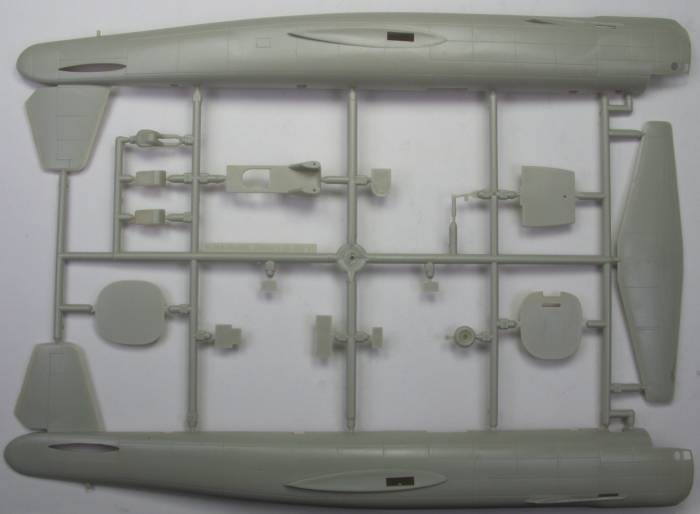
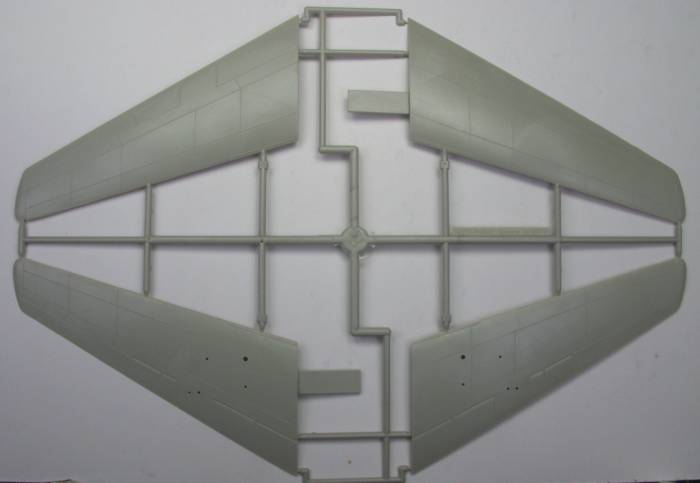
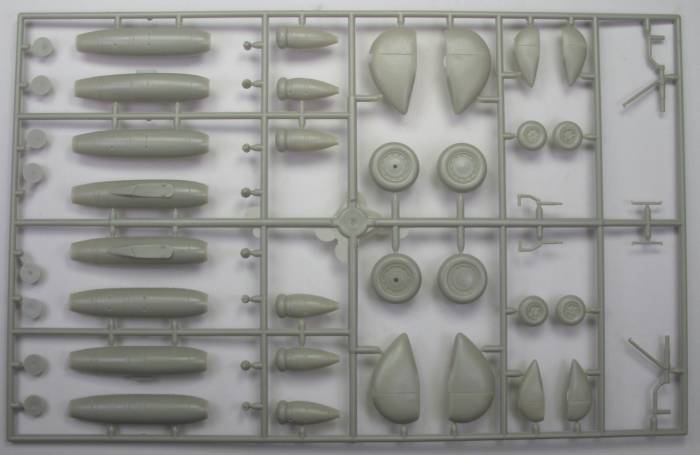
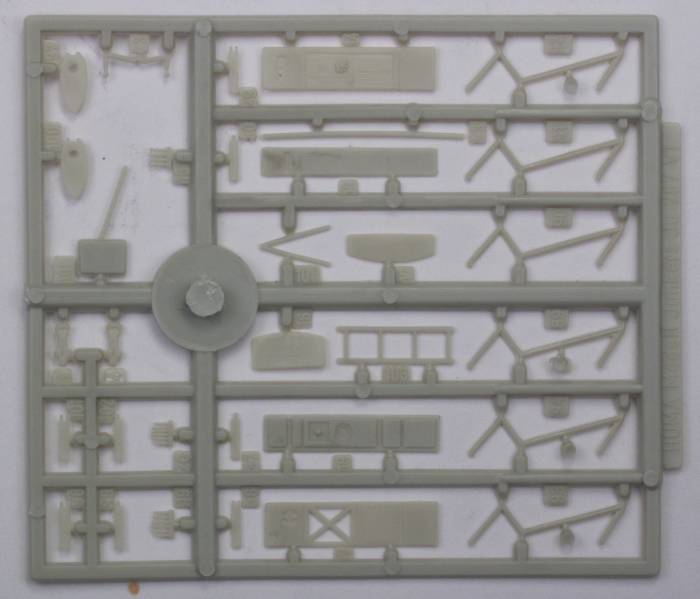
The clear parts are injection molded and mine had suffered some from being packed with all the other parts. They are reasonably clear and thin and have well defined frame lines. They should look great with a coating of Future. Altogether there are six clear parts bringing the kit total to 102 parts. See photo below.
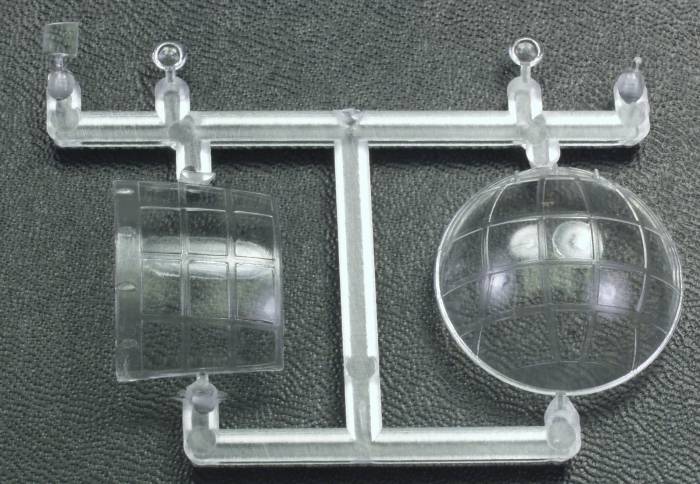
The decals are very thin and in register. Only national markings and radio call letters are supplied along with the instrument decals. Swastikas could be made from the black and white boxes but I'm not sure it would be worth the trouble, best to find some after market swastikas. See photo below.
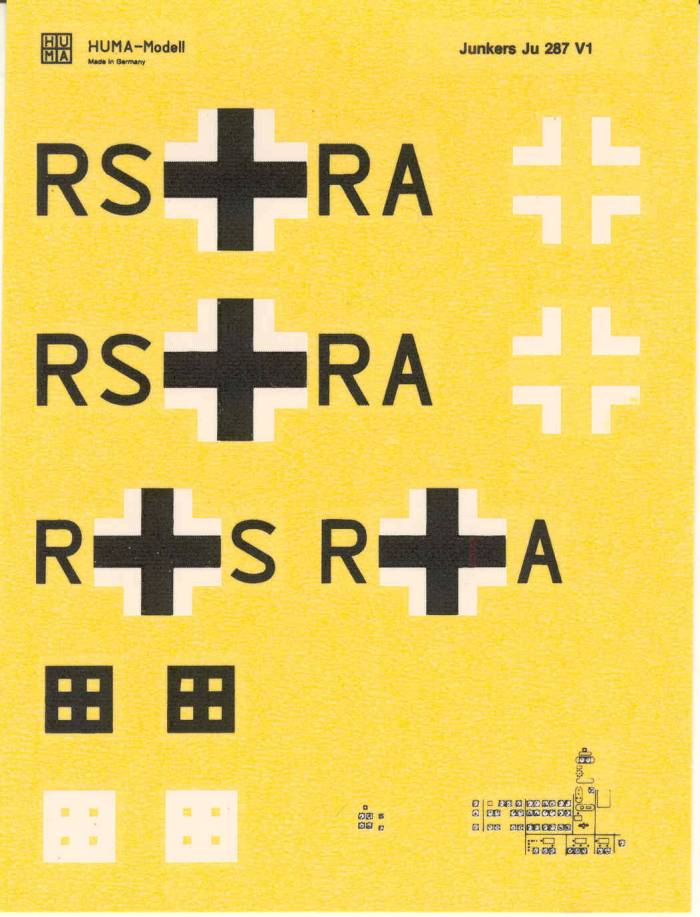
The instructions are printed on two large sheets that are folded to fit the box. One has history and specifications on one side and the other side is printed in color showing the painting and markings which is illustrated in full scale. The other sheet has the assembly diagrams which are brief but adequate. There is also a small sheet which has a parts map for one sprue that does not have numbers on it.
Conclusions
This kit seems to be a bit above the norm for limited run kits. The plastic has a nice feel to it and with alignment pins should go together with a little less work than those without. The only other Huma kit I have is the Ju 288 and I got the same feeling with it that it just a bit better than norm for this type of kit. According to other reviews the fit of the main gear and the RATO units is poor and that combined with the rather weak nature on the landing gear may get the best of less experienced modelers. I would recommend it to modelers on most skill levels except those with very limited experience.
Links to kit build or reviews
A build / review can be found here and some photos of a completed model here.
References
"Warplanes of the Third Reich" by William Green
Back to the MISCELLANEOUS 1/72 page
Updated
6/22/08